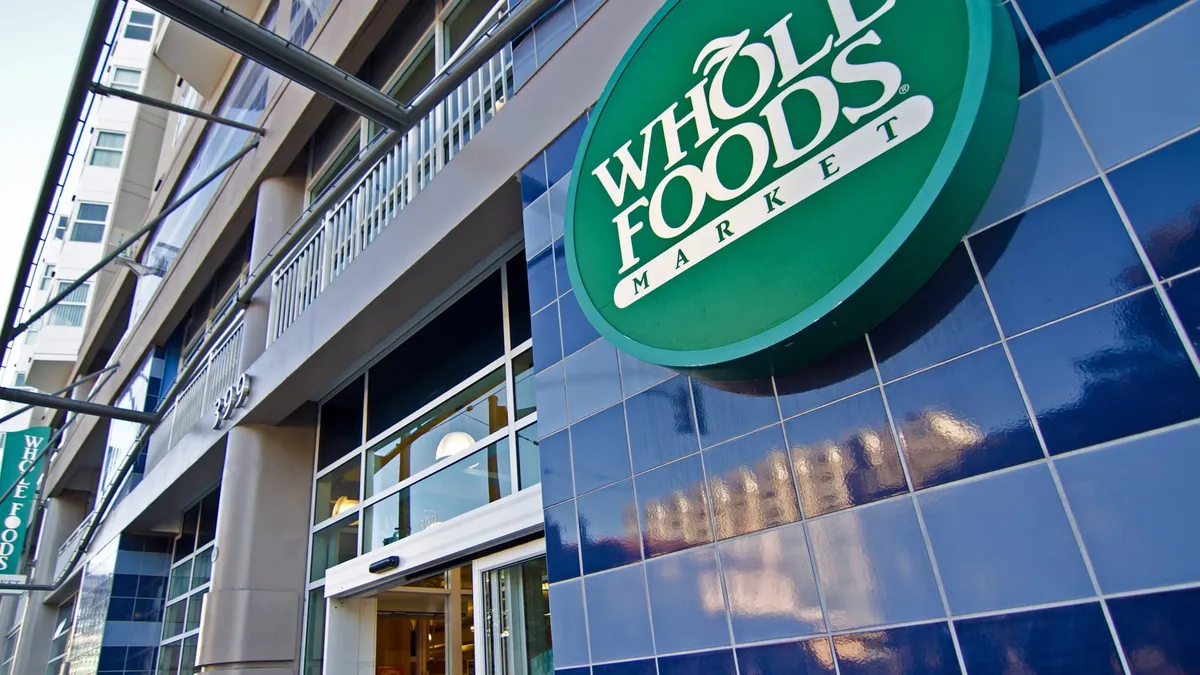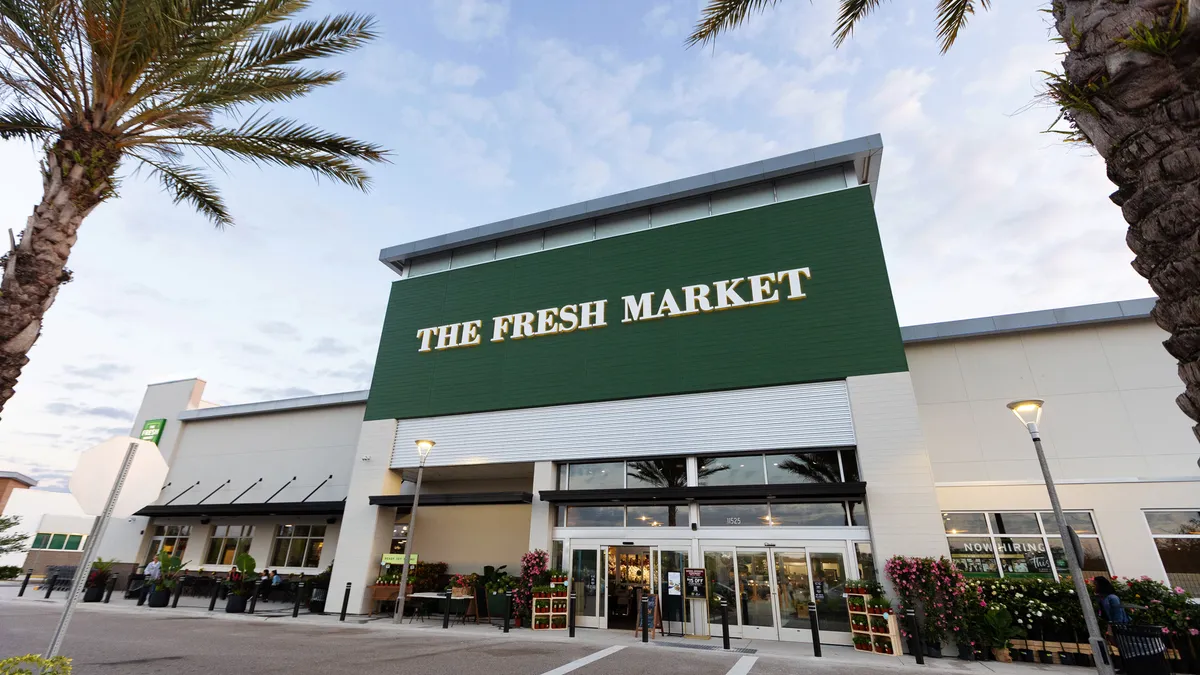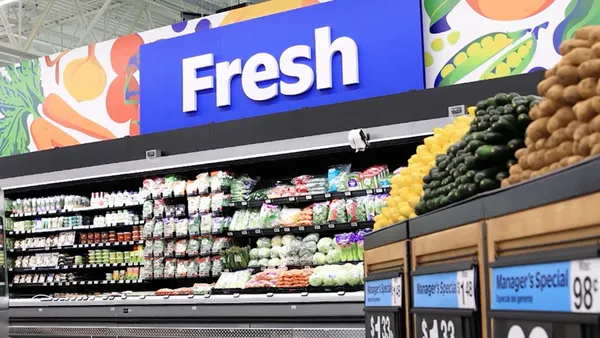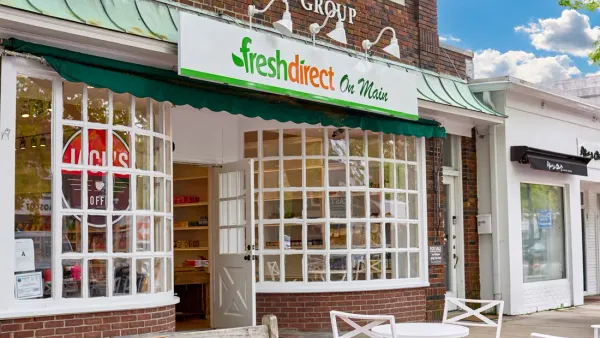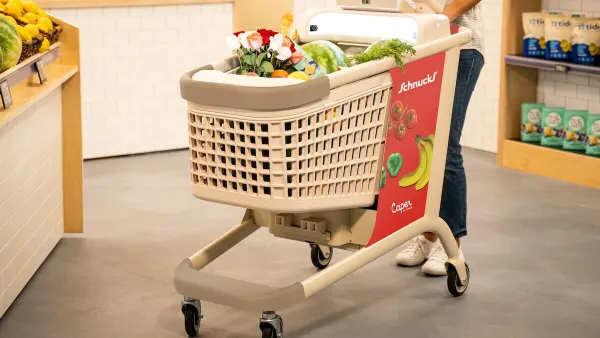Dive Brief:
- Whole Foods’ store traffic appears to finally be on the upswing after months of lackluster visits during the pandemic, according to data from Placer.ai.
- The grocer recently had its best four-week stretch of store traffic this year compared to 2019 figures, the firm found. However, the numbers are still well below pre-pandemic results.
- Placer.ai also noted that Whole Foods and Amazon Fresh stores appear to be serving unique customer sets, underscoring the company’s focus on reaching a wide range of grocery shoppers.
Dive Insight:
Whole Foods traffic took a major hit during the pandemic, but it’s been slower to recover than other grocers, according to Placer.ai, which uses cell phone data to track store visits.
This could be chalked up to a number of factors, including many stores’ positioning in urban centers where office buildings closed down and a clientele more likely than other chains to shop online. Offering free Prime delivery on large orders certainly made the shift to e-commerce easy — perhaps too easy, judging by the $10 fee the grocer will soon begin testing in certain markets.
Now the company’s traffic appears to be picking back up as offices reopen, shoppers venture out more and the economy is humming along, particularly for high-earning households, Placer.ai noted.
The firm’s data shows the gap between its 2019 visits and those made this year shrank three months in a row between April and June, moving from down 20.8% to down 13.5%. That follows a yearlong period when Whole Foods’ traffic was, with one exception, down at least 20% each month compared to two years prior.
Despite this promising trend, Whole Foods’ traffic numbers still sit well below 2019 numbers at a time when many other chains are now surpassing their two-year traffic figures, Placer.ai said. The problem points to deeper issues plaguing Whole Foods, including stiff competition from conventional grocers across the natural and organic categories where Whole Foods is still attempting to stand out.
In addition, while the chain has implemented efficiency measures, price cuts and convenience-oriented technology like the Amazon One palm-reading payment device, these steps may be at odds with Whole Foods' identity as a specialty grocer.
“There is also a question of how a higher priced offering meshes with the convenience orientation of an Amazon operated entity,” Placer.ai noted in a blog post discussing its results.
Whole Foods recently reorganized some of its corporate divisions. It’s also trying to show consumers it’s committed to local products and ethical standards. It recently launched its own “Sourced for Good” label and is certifying its private label products under programs like Fair Trade and Rainforest Alliance.
Whole Foods is plowing ahead with store development, with dozens of locations currently in its pipeline. But the spread of the delta variant could dent its progress in drawing shoppers back to its aisles. It also remains to be seen how fast-delivery firms will impact the grocer’s sales as they spread across urban markets in the U.S.
Looking at the bigger picture, Placer’s data also shows very little overlap between Whole Foods shoppers and Amazon Fresh store shoppers, indicating the chains are together reaching a broad collection of consumers. When measuring visits across seven areas, the firm found that in June, just 13.6% of Fresh shoppers on average had also been to a Whole Foods.
Amazon’s grocery store strategy is still under development, with just 16 Fresh stores and a struggling specialty player in its arsenal. But the crossover data indicates the company is on the right track as it seeks to offer additional value to, and glean data from, a mass quantity of consumers.



